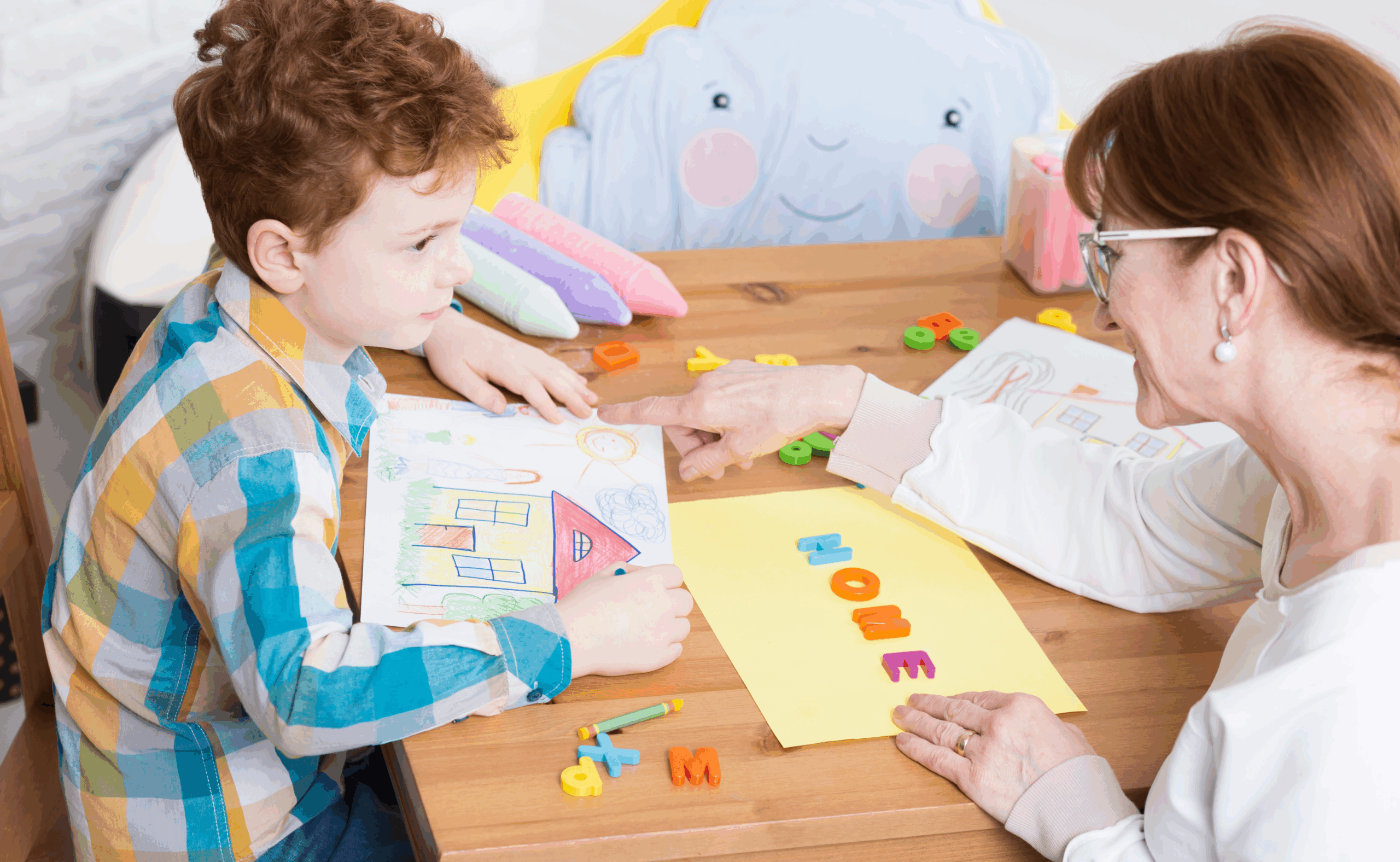Being new parents, we already anticipated that there would be changes in our daily routines. Our nights will be sleepless, and your patience will be tested. It will be a trial-and-error process most of the time, but keep in mind that every parent has gone through it.
You are waking up in the middle of the night to feed the baby, the non-stop crying playlist that you have to endure for hours, and the struggles of putting the baby to sleep. Your baby’s bedtime routine or daytime naps are one of the hurdles that you have to face when becoming a parent.
Reading this article will give you tips and tricks on how you can easily train your baby to learn to sleep on their own. It will discuss The Ferber method and how it can help your baby fall asleep faster and for a longer period.
Follow the training steps and experience the bliss of putting your child to sleep during bedtime. Parenthood shouldn’t have to be a strenuous transition. You can always find ways to keep it bright and breezy!
What is The Ferber Method?
The “graduation extinction,” commonly known as the Ferber Method, is a sleep training program for infants. It was discovered by Dr. Richard Ferber, a director of a Children’s hospital in Boston who specializes in pediatric sleep disorders.
If your little one’s sleep time routine is starting to drain you out, then the Ferber method might be the answer to your problem. Your child is going through a developmental phase, and this too shall pass.
Using the Ferber method will help your child fall asleep faster, sleep better, or fall back asleep easily by teaching them how to self-soothe and sleep through the night. The main goal of this sleep training is to train a child how to sleep on their own, with minimum crying.
This method of sleep training is only effective if the parents are committed, and training is consistent. The initial stage of Ferber sleep training will involve tons of self-restraint and a lot of crying, but the results will be worth it.
The Best Age to Use The Ferber Method
Richard Ferber pointed out in his book, “Solve Your Child’s Sleep Problem“, that sleep training shouldn’t start too young. The best age to consider initializing the Ferber method is when the baby is around 5-6 months old. Right before a child starts to learn how to sit and stand on their own.
Most parents start when their baby is at around 4-5 months when their child has sleep problems. Since most infants at this age should already sleep through the night, this approach is not recommended for babies less than three months old. But every child’s development is different. There are no right or wrong times to start sleep training. You know what’s best for your child.
Step-by-Step Method Ferber Method
The Ferber method of sleep training only works well if you follow the plan religiously. Keep in mind that this sleep training method is not a one-size-fits-all kind of thing. What works for other babies might not work with yours. So don’t be discouraged if it doesn’t work on the first try. Be patient with the results.
Can your baby sleep through the night? If not then here are the steps on how to implement the Ferber method:
- First, lay down your groundwork. Go to sleep. Make sure that you have enough sleep if you’re the one assigned to do the training. You are expected to be deprived of sleep before things will get better. Try to remember that your child is trying to learn a new skill, and sleep won’t come easily on the first night. You will be tested mentally, emotionally, and physically. So be prepared.
- Follow your child’s usual bedtime rituals. Make necessary changes to your child’s feeding and sleeping schedule if you must. Having a consistent bedtime schedule is vital for easier sleep train.
- Let your child go to bed or place them in their own sleep space while they are still awake or “drowsy”. Have a consistent song or a phrase, such as “goodnight” that you have to repeat every time you tuck them in. Leave the room and close the door.
- When the baby starts to cry, start your timer. Do not check in on your child immediately after you hear them cry. The Ferber method plan provides an appropriate time for check-ins. For example, on the first night, set the timer to 3 minutes before the first visit, 5 minutes on the next visit, 10 minutes on the third, and another 10 minutes for subsequent visits.
- On the second night, set the timer to 5 minutes before the first visit, 10 minutes on the second visit, 15 minutes on the third, and another 15 minutes on the other succeeding visits. Try to lengthen the intervals of check-ins gradually every night. This is called progressive waiting.
- Every time the timer goes off, visit your child briefly. Try to cuddle and comfort them for not more than 2 minutes and make sure to leave while they are still awake.
- When the child wakes up during the night, you have to start the process all over again. Continue with the progressive waiting until the child falls back asleep. Do not stop the child’s feeding but try eliminating the extra feedings.
- Continue checking in until 5:00-6:00 in the morning. Dr. Ferber suggests adjusting your child’s sleep habits and nap schedule. Try waking your child up in the morning and not allowing them to fall back to sleep in the next room.
- Repeat the process of checking in with progressive waiting on the following nights until the baby learns how to fall asleep without any fuss or crying.
The time intervals you use on your baby depend on how persistent they can be. Easy-going babies would cry a little and easily falls asleep. But some babies would start a ruckus and cry their hearts out, especially during bedtime.
Here are examples of time intervals used for different child temperaments:
For Mild-mannered or Easy-going baby
Easy-going, temperamental babies have regular bodily functions, positive moods, and those who do not have intense reactions to stimuli.
- Day 1: set your timer 3 minutes before the 1st visit, 5 minutes before the 2nd visit, 10 minutes before the 3rd, and 10 minutes on the succeeding visits
- Day 2: 5 mins on the first, 8 mins on the 2nd, 12 mins on the 3rd, and succeeding visits
- Day 3: 8 mins on the 1st, 12 mins on the 2nd, 15 mins on the 3rd, and succeeding visits
- Day 4: 10 mins on the 1st, 15 mins on the 2nd, 20 mins on the 3rd, and succeeding visits
- Day 5: 12 mins on the 1st, 18 mins on the 2nd, 25 mins on the 3rd, and succeeding visits
- Day 6: 15 mins on the 1st, 20 mins on the 2nd, 25 mins on the 3rd, and succeeding visits
- Day 7: 20 minutes on the 1st, 25 minutes on the 2nd,30 mins on the 3rd, and succeeding visits
For Intense-Spirited Baby
Intense-spirited babies are characterized as having irregular bodily functions, slow adaptability, and those who have withdrawal behavior to new situations.
- Day 1: set your timer 3 minutes before the 1st visit, 5 minutes before the 2nd visit, 8 minutes before the 3rd, and 8 minutes on the succeeding visits
- Day 2: 5 mins on the first, 8 mins on the 2nd, 10 mins on the 3rd, and succeeding visits
- Day 3: 8 mins on the 1st, 10 mins on the 2nd, 12 mins on the 3rd, and succeeding visits
- Day 4: 10 mins on the 1st, 15 mins on the 2nd, 20 mins on the 3rd, and succeeding visits
- Day 5: 12 mins on the 1st, 18 mins on the 2nd, 20 mins on the 3rd, and succeeding visits
- Day 6: 15 mins on the 1st, 18 mins on the 2nd, 20 mins on the 3rd, and succeeding visits
- Day 7: 15 mins on the 1st, 18 mins on the 2nd,20 minutes on the 3rd, and succeeding visits
Modified Ferber Method
Is the Ferber method modifiable? Of course, it is. You can lengthen the process if necessary. Stretch out Ferber’s 7-day process to over 14 days and increase the progressive waiting time up to 30 minutes every night if needed.
When your child is sick or has sleep problems, you can always take a break from sleep or nap training until the child feels better.
This baby-sleep training is also modifiable depending if the child sleeps on the bed or the crib. If the child sleeps in a crib in the parent’s room, there is no need for the parents to leave the room. They can simply speak to the child at designated times or approach the crib to reassure the child.
If you’re co-sleeping with your child, the parents have to stay unresponsive and still until the waiting time is up.
Is the Ferber Method harmful to your baby?
Putting your child to sleep is crucial for their brain development and nutrition. Sleep training through the Ferber method is proven to be safe and essential for your babies to achieve a night of healthy sleep. This sleep training technique is more helpful than harmful to your child.
Study shows that letting the child cry with constant visits of reassurance from the parents will not cause the child any trauma. It allows your baby to sleep through the night for a longer period of hours. If ever they wake up in the middle of the night for feeding, it is also easier for them to fall back to sleep with less crying.
How Long Does The Ferber Method Take?
If the parents follow the design plan consistently, it usually takes 3-4 days before significant progress is notable. But it is also important that the child has no sleep problems and can fall back to sleep on his own to achieve maximum results.
What About Night Feedings?
When your baby is developing well at six months of age, it is ok to think about phasing out night feeding for bottle feeders. At six months old, your baby is already getting enough nutrition during the day; this could help your baby sleep through the night.
But if you think your baby is not yet ready for this phase. It’s ok. You don’t need to hurry to phase out the night feeding. If your child has a nighttime feeding, then allow them to feed.
Do not stop the feeding even during their sleep. Start the Ferber method again after they fed until your baby starts falling asleep. When checking in, avoid feeding or picking up the baby. Allow them to cry and go back to sleep on their own.
What About Naps? Are Those Different?
Nap sleep is way different from nighttime sleep. They are handled differently by two parts of the brain. The only difference in using the Ferber method for naps is limiting the sleep training session to an hour.
If the baby does not learn to fall asleep fast within an hour, parents should take a 1-hour break and try again. The training for naps is not as difficult as night sleep training unless the baby has sleep problems or not feeling well. Consistency with the training for two weeks usually shows maximum progress.
Ferber Sleeping Method – Photo by Beth
from under CC BY 2.0
What About Separation Anxiety and Is This Method Flexible?
After placing your baby in the crib, you slowly walk out of the room, the baby cries. This is because of separation anxiety. Babies usually show this kind of behavior at 3-4 months of age.
Separation anxiety is a natural part of your baby’s emotional development. Their awareness of time starts to mature, and they can’t wait for you to return to them. Ferber method is flexible in helping your baby adapt to these changes. It is up to you to adjust the wait time of check-in if needed.
Separation anxiety with babies peaked at around seven months of age. If this is the case, consider doing sleep training while you’re in the room with shorter periods of wait time.
Be aware that sometimes the child gets easily frustrated if their parents are close by during sleep training. This could cause them difficulty falling asleep. It could also cause the baby’s confusion of why their parents are there but don’t want to comfort them.
The check-ins will allow you to reassure your babies periodically. It will help them understand that you’ll come back for them whenever you leave, which is the primary reason for their separation anxiety.
Ferber Method Tips
The sleep training technique can be challenging for both the baby and the parents. But there are ways to make it easier and gratifying.
Here are some tips on how you can guarantee the success of pediatric sleep Ferberization. Keeping these strategies in mind will ensure that everyone will be sleeping blissfully through the night.
Consistency Is the Key
The only way that this method could work is when both parents or caregivers are fully committed to the process. The training could last for days or even weeks, and you and everyone else involved must be on the same page. Hearing the baby cry for some period of time may sound cruel to other people. But picking them up and rocking them before the alarm goes off can drag the process of training.
Plan Out a Bedtime Routine
You can’t just put your toddler to sleep right after they run around the house with all that energy pumping through them. Start establishing simple patterns of rituals before they go for a nap or bed. Have a quiet time to help them fall asleep faster. Read a book or let them play with blocks. This period of calm time will help your child’s mind and body to slow down and relax.
Try to Wean Night Feedings
Infants wake up in the middle of the night to feed. Your child wouldn’t get the hang of sleep training if you kept responding to their cries at night.
Watch Out for Sleepy Cues
Make sure that you let your baby get their naps or sleep when they’re nice and sleepy. Passing the point of exhaustion, they will be more difficult to put down. Ferber training works better when they are drowsy and not overtired.
Stick With the Crib
Don’t let your child have the habit of sleeping in different places. It can hinder them from developing self-soothing behavior. Placing your child in a bed or the crib while they are still awake helps them recognize their environment after they wake up. It lessens the child’s anxiety and allows them to self-soothe.
Ferber Sleep Training Method FAQs
How long do you let a baby cry it out for a nap or sleep?
How long you should let your baby cry for a nap or sleep depends on how persistent the crying is. Having an intense-spirited baby would take a longer wait time compared to easy-going babies. Letting the baby cry out during sleep discipline is normal.
Can you do the Ferber method with a pacifier?
No, you cannot do the Ferber method with a pacifier. The main goal of Ferber training is to teach your child how to self-soothe on their own. Pacifiers are one of the tools that stop your baby from crying or screaming. It gives them comfort. But during the training, they have to let go of their binkies. It would be best if you didn’t allow them to get comfort from something else aside from themselves.
Do I let my baby cry it out for naps?
Yes, letting the baby cry it out during naps can lengthen their day naps. The melatonin in your baby’s body during the day is much lesser than there is during the night. Effects of melatonin help your infants relax and feel drowsy. It is harder for your child to fall asleep on day naps than nighttime sleep.
Can you start sleep training with naps?
Yes, but it is much better to start sleep training at bedtime, where sleep drive is strongest. By this, you are guaranteed that the child will fall asleep. During nap time, infants have a weak sleep drive, and they are not sleepy. It will take longer hours for them to accept falling asleep in a new place or new way.
How long will a baby fall asleep with the Ferber Method?
Each child is different. Your baby may respond differently to the Ferber method. But in general, you can expect progress of diminishing crying during bedtime within 3-4 days. That is, if you are being consistent enough and follow the method religiously.
What are other alternatives for Ferber Method?
There are other methods of teaching a child how to fall asleep on their own. Here are some of them:
Bedtime Fading
An alternative use is a child is a bit older for the Ferber training. It is most effective for children four years and above. It can help them reset their body clock.
Camping Out
This is also known as the “chair method”. It is where the parents don’t have to go out of the room and stay near where the baby is sleeping. But the challenge is, when the child starts crying, they are not allowed to pick them up right away.
Pick-Up-Put-Down Method
Also known as the PUPD. It is a less popular way of baby sleep training. When the baby starts crying, the parent will pick them up and cuddle until the baby calms them down to sleep. The cycle is repeated until the baby is asleep. It will require a ton of patience and work for the parents.
The Takeaway
Sleep training can be more than challenging. Some children are difficult to train, but some can adapt easily. Being consistent with the method is the key to achieving maximum progress in training your children to fall asleep independently. Having enough sleep could help your child’s overall development.
Don’t let another sleepless night hinder those precious moments you have with your baby. Here at Clever Bee Academy, we have programs that include infant daycare and summer classes designed to help your child learn new skills appropriate for their age.
If you want to learn more about us, do not hesitate to contact us. We also encourage you to schedule a tour of the Clever Bee Academy baby learning center nearest you.







